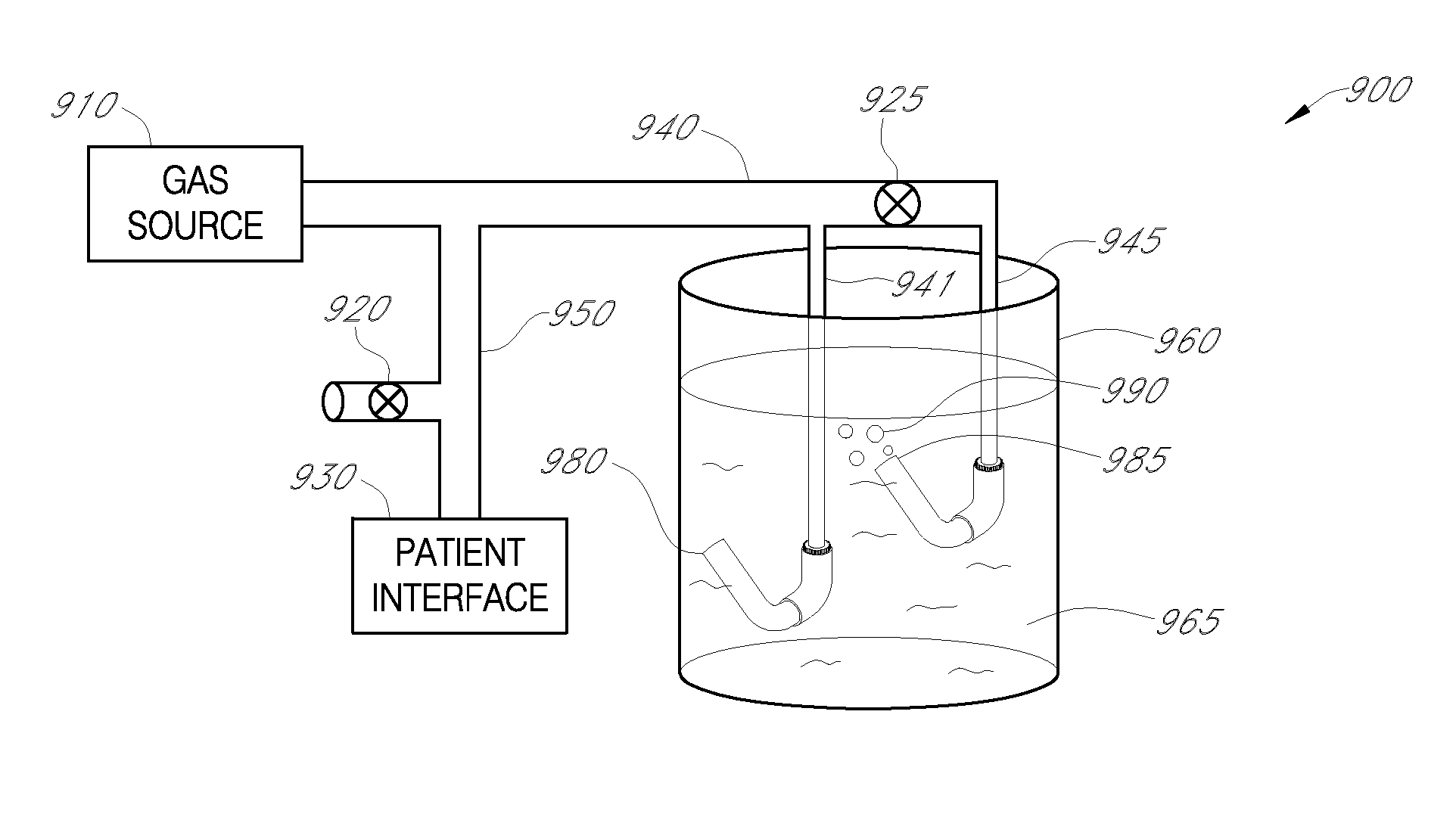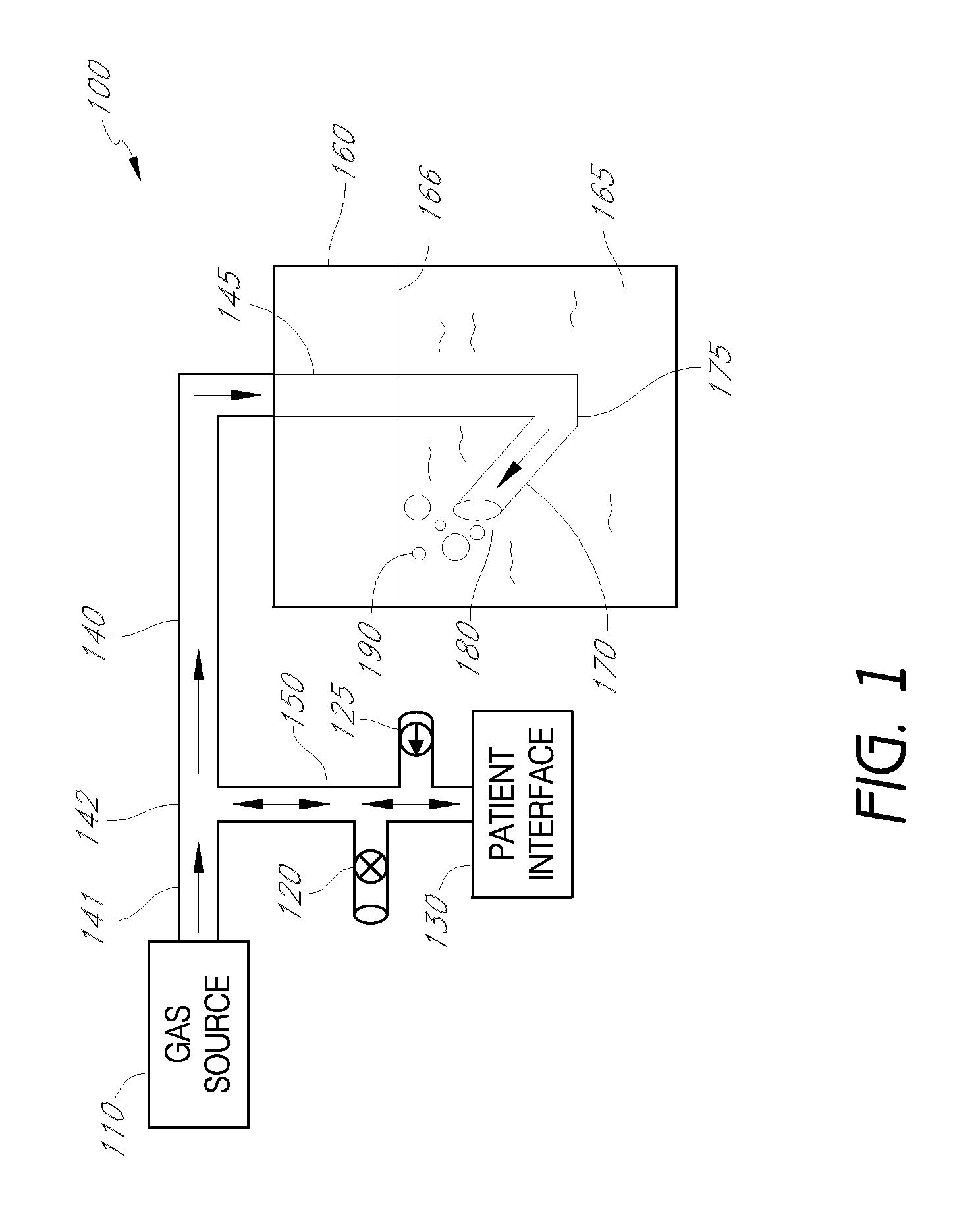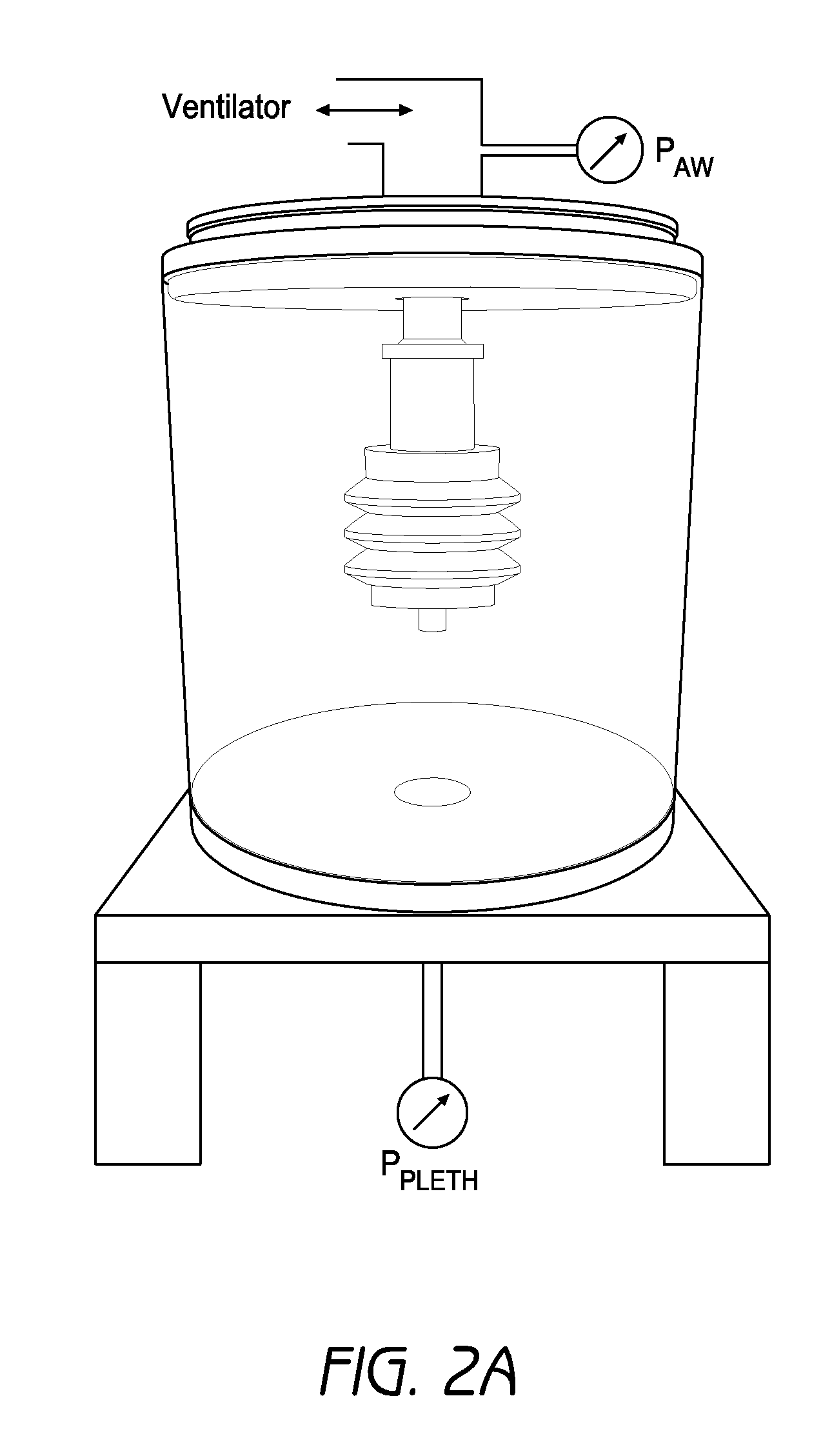Broad-band, low frequency, high-amplitude, long time duration, oscillating airway pressure breathing apparatus and method utilizing bubbles
a breathing apparatus and airway pressure technology, applied in the field of broad-band, high-amplitude, long-time duration, oscillating airway pressure breathing apparatus and method utilizing bubbles, can solve the problems of lifelong health problems, severely premature infants with underdeveloped lungs, and insufficient surfactant to maintain stable lung volume, etc., to achieve stable lung volume, improve gas exchange, and long-term
- Summary
- Abstract
- Description
- Claims
- Application Information
AI Technical Summary
Benefits of technology
Problems solved by technology
Method used
Image
Examples
example 1
[0112]This example describes the silastic test lung system, methods and experiments that were performed to calculate the embodiments described herein in this model system. FIG. 2A shows the model test lung (hermetically sealed within a calibrated plethysmograph) that was used to bench test the patient ventilation system 100 of FIG. 1. Steel wool (not shown) can also be used to surround the silastic lung within the plethysmograph to maintain near isothermal conditions. The plethysmograph pictured in FIG. 2A was purchased from Ingmar Medical®. The silastic test lung was made by Maquet Critical Care (Test Lung 191 63 01 720 E380E). Unless stated otherwise, the lung compliance is set to about 0.47 mL / cmH2O and the airway resistance is set to about 200 cmH2O / L / Sec. In some embodiments, an infant head model (with an internal volume of about 300 mL, including connectors) with Hudson nasal prongs (not shown) was connected to the silastic lung model and leak rates around the nasal prongs wer...
example 2
[0115]This example describes how the patient ventilation system of FIG. 1 was evaluated with a method (disclosed below) to determine the affect of the angle of the bubbler on the frequency bandwidth and composition of the pressure oscillations. To determine the bandwidth of the oscillation in airway pressure, the airway pressure-time waveform (unfiltered) was transformed into the frequency domain using fast Fourier transformation (FFT). The frequencies were then filtered using a 10-point boxcar. A relevant range of frequencies was defined as the longest set of contiguous frequencies with amplitudes greater than −7 dB relative to the peak magnitude. The magnitude of oscillations is the square root of the sum of the real and imaginary parts of the FFT each squared, with units of cmH2O. Outlier frequencies that were more than 1 Hz away from the set of frequencies were not considered. The frequencies yielding the maximum power were also recorded. For example, FIGS. 3 and 4 show measurem...
example 3
[0116]This example describes how the patient ventilation system of FIG. 1 was evaluated in bench tests to determine the affect of the angle of the bubbler on the frequencies and amplitudes of the pressure oscillations, as well as the corresponding volume of gas delivered to the silastic lung model. Referring to FIG. 5, three different bubbler angle configurations of 0°, 90° and 135° were used to illustrate the effect of the bubbler angle on pressure oscillations delivered to the silastic lung model (a constant bias flow of 6 L / min was used). When the bubbler angle is oriented vertically in the liquid (0° from the vertical to the water surface), only relatively high frequency, low-amplitude pressure oscillations are generated, resulting in very little gas being delivered to the lung. In this configuration, the system is similar to conventional B-CPAP. When the bubbler angle is adjusted horizontally (90° from the vertical and parallel with the liquid surface) both high and low frequen...
PUM
 Login to View More
Login to View More Abstract
Description
Claims
Application Information
 Login to View More
Login to View More - R&D
- Intellectual Property
- Life Sciences
- Materials
- Tech Scout
- Unparalleled Data Quality
- Higher Quality Content
- 60% Fewer Hallucinations
Browse by: Latest US Patents, China's latest patents, Technical Efficacy Thesaurus, Application Domain, Technology Topic, Popular Technical Reports.
© 2025 PatSnap. All rights reserved.Legal|Privacy policy|Modern Slavery Act Transparency Statement|Sitemap|About US| Contact US: help@patsnap.com



